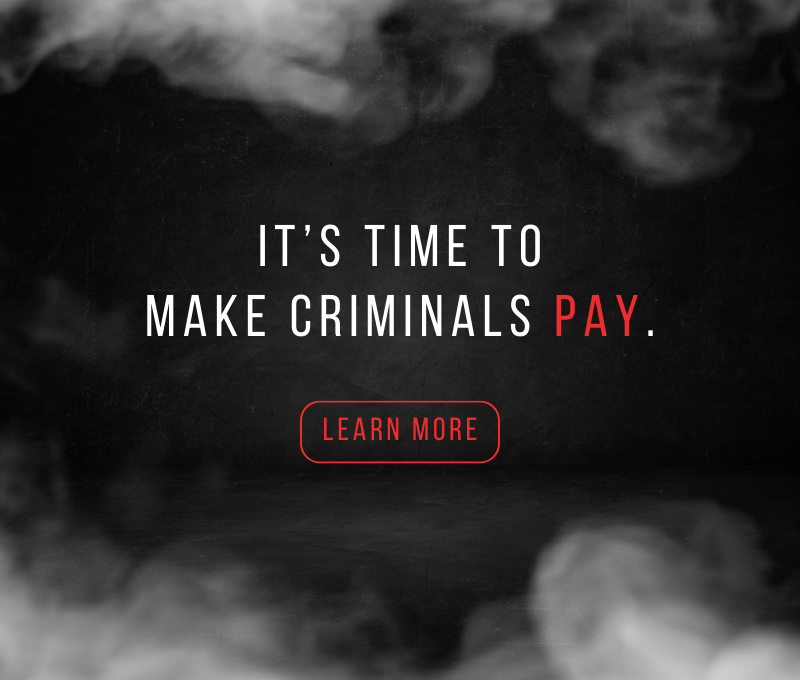What Is Organized Retail Crime (ORC)?

Are you thinking to yourself, “What is organized retail crime?” Maybe, but probably not. If you’re reading this, it’s probably because of the headlines you’ve seen or the first-hand experience you’ve had with this kind of chaos.
However, on the off chance you’re not 100% clear, let’s clarify. Organized retail crime, or ORC, is the coordinated theft of merchandise from retail stores with the intent to resell it for profit. And it’s a massive problem for many business owners.
Unlike individual shoplifting incidents, ORC involves networks of criminals who target businesses, often operating across multiple locations and jurisdictions. This semi-recent phenomenon poses a huge threat to retailers of all sizes, impacting their bottom line and jeopardizing the safety of both employees and customers.
Unfortunately, you might also be familiar with terms like smash-and-grab, flash-mob robberies, and mass looting, among others. They’re all referring to types of ORC that have increased in frequency and brazenness in recent years.
The Data Behind Organized Retail Crime
According to the National Retail Federation, ORC costs the U.S. retail industry billions of dollars annually. Tracking exactly how much, however, gets a little tricky. Many retailers don’t track ORC differently from typical theft, and it’s not a specific category of crime for standardized police reporting. As a result, much of the industry data around ORC is estimated. But none of it looks good.
Retail theft is out of control. In 2019, industry-wide shrink, including ORC, amounted to about $61.7 billion in losses. Only a few years later, in 2022, that figure skyrocketed to an estimated $112 billion. And the projections for 2025 are looking even worse. We’re looking at a staggering $143 billion in losses in 2025—if current trends continue.
Other important stats about ORC:
- Only 11% of ORC groups target luxury goods. Most focus on electronics, consumer products, and other easy-to-fence items.
- The types of businesses affected most by ORC are pharmacies, big box stores, and home improvement stores.
- Over 70% of loss prevention managers say that ORC has increased over recent years. Not a single respondent said ORC had decreased.
- Approximately 50% of ORC incidents are not reported to the police. Why? The individuals involved believe the police will not respond and that there is too much crime to report. That, and the employees are simply too busy to file a report.
Clearly, the retail sector has a crime problem. But does your store?
Is Your Business at Risk?
ORC networks strike anywhere they anticipate getting away with it—relatively unscathed by the law.
Urban centers tend to be a hotbed for ORC activity. These have more retail establishments and larger “customer bases” for stolen goods. Cities with bustling shopping districts attract ORC groups looking to exploit the heavy foot traffic and easy merchandise availability.
Before ORC activity became so brazen, these criminal networks stuck to high-volume retail locations like malls, department stores, and big-box retailers. In these settings, they could blend in with the crowds and go unnoticed.
Today, however, sudden and violent smash-and-grabs have become much more common. ORC gangs don’t necessarily target specific stores or products, although sometimes they do. (As mentioned, electronics are common.) Though the attacks may seem random, a commonality among victims is that they have no way of fighting back.
If a municipality doesn’t prosecute crime sufficiently, and a store can’t protect itself, ORC networks will eventually take notice and begin their operations.
Organized Retail Crime: More Organized Than You May Realize
Organized retail crime such as smash-and-grabs or flash mob robberies might appear organic. Perhaps a bunch of random individuals see an opportunity simultaneously and start sealing. However, that’s simply not the case.
ORC happens within structured networks and hierarchies, with designated leaders, recruiters, thieves, and distributors. These networks operate no differently than a mob or cartel. This kind of structure allows for clear lines of communication and coordination among members, allowing each individual to play a specific role in the criminal enterprise.
Unsurprisingly, many ORC groups also research target locations, looking into store layouts, security measures, staffing patterns, and inventory schedules. This intelligence-gathering allows them to identify vulnerabilities and plan their thefts with some precision.
The internet has made it much easier for criminals to organize attacks and sell stolen goods anonymously. ORC gangs use various digital communication channels to coordinate their efforts, including encrypted messaging apps and popular social media platforms. These channels enable members to share information about potential targets, plan thefts, and arrange for the sale of stolen merchandise discreetly.
Once ORC networks have carried out the theft, they must distribute the goods to various outlets for resale. This may involve using vehicles equipped with hidden compartments, renting storage facilities, or leveraging legitimate shipping channels to avoid detection. Some ORC networks use online marketplaces, pawnshops, flea markets, and illicit storefronts to fence and resell merchandise. This helps the criminals quickly monetize their stolen goods while minimizing the risk of detection.
Stolen goods are also often trafficked across state lines. Unsuspecting shoppers think they’re getting a deal. Selling these items in another region requires some individuals in the ORC gang to embed within communities along the way to the final destination. In other words, ORC members are likely living all around us.
Organized Retail Crime Affects More than Retailers
Wherever organized retail crime happens, it creates a dangerous situation. ORC perpetrators often resort to violence or threats of violence to accomplish their objectives or evade apprehension.
A recent survey from the Retail Industry Leaders Association found that two-thirds of retailers reported an increase in ORC incidents. More than 75% said an ORC offender had physically assaulted an employee. Similarly, a survey from the National Retail Federation found that 70% of retailers are prioritizing ORC more now than in the past, and more than 80% have noted more aggression during ORC incidents.
Employees may be subjected to assault, verbal abuse, or intimidation tactics. If they try to stop the perpetrators, they may be in even more danger. To protect employees and mitigate this risk, some corporate retailers have made confronting criminals a violation of their loss prevention policy—oftentimes a fireable offense.
Customers shopping at stores targeted by ORC gangs may also find themselves in peril by witnessing thefts in progress or becoming unwittingly involved in altercations. The presence of violent criminals in retail environments undermines public confidence, potentially deterring customers from patronizing affected businesses. In some cases, innocent bystanders have been injured during ORC-related incidents, highlighting the broader impact on public safety.
Normal business operations are also threatened because of financial losses, property damage, and logistical challenges for retailers. Additionally, the negative publicity surrounding ORC-related incidents can tarnish a store’s reputation, leading to decreased customer trust and diminished foot traffic.
The cumulative impact of ORC, including lost revenue, increased operating expenses, and decreased consumer confidence, can have far-reaching consequences for communities and the broader retail industry. Small businesses, in particular, may struggle to absorb the financial losses resulting from ORC incidents, potentially leading to closures or layoffs.
There is an urgent need to combat this growing threat.
The Solution That Fights Back Against Organized Retail Crime
Deep Sentinel is launching a powerful offensive weapon against ORC called FlashBang—a solution that deploys additional active deterrent capabilities to suppress and subdue thieves.
FlashBang integrates directly with Deep Sentinel’s award-winning live camera monitoring services, allowing businesses to deploy additional deterrents. These include:
- Smoke Bombs
- Pepper Spray
- Strobe Lights
- Ear-Piercing Sirens
Businesses have had enough. FlashBang is the new way to fight back. It’s time to move beyond traditional deterrence measures that have proven ineffective.
If you want something done right—do it with a bang… a FlashBang from Deep Sentinel.
Deep Sentinel and FlashBang: The Smart Choice
In addition to innovative solutions like FlashBang, here’s what you can expect from Deep Sentinel.
Comprehensive Protection
Deep Sentinel provides holistic, robust security. It combines state-of-the-art cameras with advanced features such as infrared night vision, motion activation, 2-way audio, and floodlight capabilities. This comprehensive approach ensures that your business is safe from various threats, including organized retail crime, intrusions, vandalism, and suspicious activity.
Professional Monitoring
Deep Sentinel’s unique offering lies in the active monitoring service. It’s a unique combination of an AI-powered system that instantly assesses all threats and live security guards who intervene promptly. This level of monitoring provides a higher level of security, enabling an immediate response and eliminating the risk of incidents going unnoticed.
Real-Time Intervention
With Deep Sentinel, businesses benefit from the assurance that trained security professionals are actively watching over their property. This real-time intervention goes beyond merely alerting you to potential threats. It enables immediate action to deter intruders and prevent incidents. This proactive approach stops break-ins and other criminal activities before they cause harm or loss.
Enhanced Deterrence
Deep Sentinel’s security system acts as a powerful deterrent to potential intruders. Visible cameras with active monitoring and two-way audio significantly reduce the likelihood of a break-in or theft. Criminals are more likely to target businesses with minimal security measures, making Deep Sentinel an effective deterrent that helps keep businesses safe.
Peace of Mind
Investing in a Deep Sentinel system provides unparalleled peace of mind. Knowing that professional guards are watching your property alleviates many security concerns.
And, for the most persistent intruders, there’s always the extra “firepower” that comes with FlashBang.
When Criminals Get Nasty, Get Revenge.
With criminals becoming more violent, the response needs to become more aggressive. FlashBang subdues even the most determined intruders with smoke bombs, pepper spray, strobes, and sirens. Visit deepsentinel.com/flashbang or call 833.983.6006 for more information.



